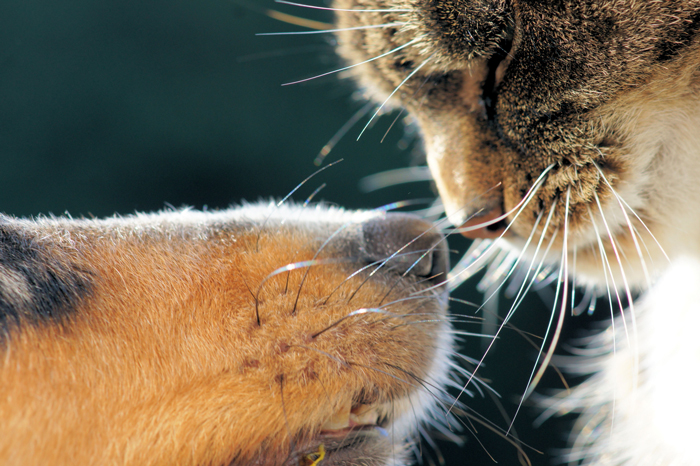Slow and easy does it for most canines.
There are reasons why dogs are man’s best friend and one of the main ones is their natural instinct to protect their territory from outsiders. For nearly 30,000 years, we have encouraged dogs to protect our homes, property and even kids from intruders.
It’s little wonder that our dogs become confused when we tell them to stop barking at a visitor or defending our territory from other animals. To allow other animals into their home is a direct assault against all of those years of conditioning.
Fortunately, dogs have also become more socially aware as they have become more accepting to outside stimuli, which include people and other pets. The key to a successful introduction is reconditioning your dog to accept outsiders.
There are several ways to help your dog accept new pets into your home. This generally requires four steps spread out over several days.
Choose the Location

To integrate two animals successfully, you need to start slowly. Place your dog in a room with a door. If you’re integrating a new cat, dog or any free-ranging animal (e.g., a ferret or large tortoise) into the home, allow the new pet to roam his or her new home for a few hours, then isolate him or her into a closed room and release your dog to sniff where the new animal walked.
Continue this isolation process for at least a day or two until they have become accustomed to the new smells in the home. This is also a good time to share a brush or toy that they have both come in contact with. For example, try brushing your new cat, then use the same brush on your dog. This helps transfer smells and make them more familiar.
Tip: If you notice your dog focusing on the door where the new pet is being held, distract him with treats. Redirection is the best way to stop this predatory behavior.
Leashed Introductions

When both your current dog and the new pet begin to display signs that the new smells are acceptable, you can begin to think about leashed introductions. Ask a trusted friend or family member to help you during this step.
Place your dog and the new pet (if applicable) on separate leashes. Allow them to sniff one another. If either animal exhibits signs of aggressive or excited behavior, immediately return them to isolation and repeat step 1.
Tip: Do not allow the animals to be alone in a home together during this time period. Your pets should be supervised closely for the first month or two as these situations could quickly escalate.

Monitored Interaction
Once the animals have become more familiar with one another and are not exhibiting excitement during encounters, allow them to have supervised visitation. The animals should not be left alone at this time. You’ll want to make sure both are calm, relaxed and playful. If the dog is focused on the other animal, you should return to leashed introductions (and possibly back to step 1).
Tip: When both pets seem at ease with one another, are sleeping and eating regularly, and are not excited when they see each other, it’s time to move on to step 3.
Unsupervised Interaction
Keep in mind it can take weeks, even months, to reach this step. While we all want to live in a harmonious world, it’s not always possible. The key to integrating new pets is to understand that it takes time to develop a trusting relationship.

Tip: Always make sure each animal has a safe place he or she can retreat to if things go wrong for any reason. For cats, this might mean a high place they are comfortable on that the dog cannot reach. For small dogs, it might be a small crate that your larger dog cannot get in to. For dogs similar in size, you’ll need to use your best judgment, but a pet door with a microchip sensor could give either dog access to a different room or area.
Remember that some dogs will never get along with other animals; their prey drive may be too high to accept a smaller pet or their habit of defending the home is too deeply engrained. If this is the case with your dog, you will need to make a decision. The responsible choice is not to bring any other pets into your home. However, if you are determined to do so, you might need to bring in an animal behaviorist or trainer or resign yourself to keeping the animals separated forever.
About the Author: Stacy Mantle is a full-time freelance writer, bestselling author and founder of PetsWeekly.com. She resides in the deserts of the Southwest with a few dogs, several cats and a very understanding husband.





